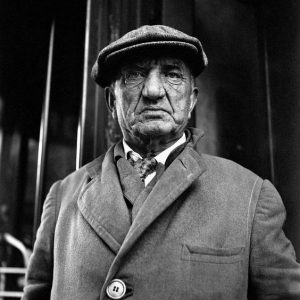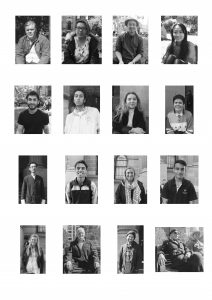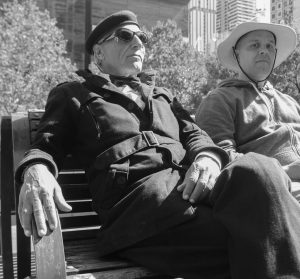Vivian Maier documentary
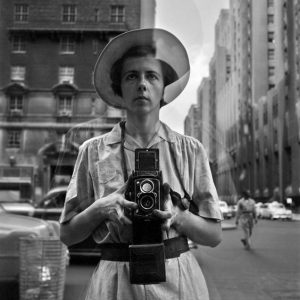
‘Finding Vivian Maier’ is a documentary about the discovery by the director, John Maloof, of more than 150,000 negatives of an unknown photographer in a storage facility.
Impressed by their artistic merit, Maloof eventually tracked down who the mysterious photographer was – Vivian Maier. An eccentric and reclusive person, Maier was a nanny for most of her adult life who took street and travel photos.
Having died in 2007, Maloof pieces together what kind of person Maier was and tries to achieve posthumously recognition from the art establishment. Alas, her work is rejected but it did receive popular acclaim in various galleries around the world.
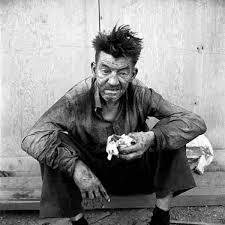
Why did her work eventually recognised? While she had a remarkable eye, I think it’s her ability to capture disarming portraits of her subjects. There’s always something interesting about each one.
This one has a real warmth and cheekiness to it. I’m not sure if the woman knew she was being photographed. Indeed, Maier used a Rolleiflex camera which her allowed her to looked down at the mirror view finder without having to lift the camera up and alert her subjects.
A lot of Miaer’s subjects were the working class and sometimes the people she worked for like Phil Donahue.
She was brilliant at getting the candid shot:
A conflicted and secretive character, Maier was a gregarious loner, a person who it was claimed had a fake French accent and someone who did not want to be recognised. Maloof struggles with the intrusion into exposing her work only to be relieved that she was planning to have her photos printed in France, a place she had spent her childhood and some of adult life in.
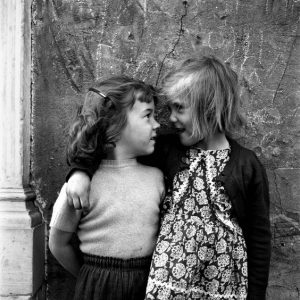
Maloof struggles with the intrusion into exposing her work only to be relieved that she was planning to have her photos printed in France, a place she had spent her childhood and some of adult life in.
Leaving no family to speak of and scant recollections from friends of who she really was, Maier left a body of work comparable to some of the greatest photographic artists of the twentieth century. In the end Vivian Maier is an enigma.
Street photography
In class, we discussed street photography based on the readings of this week by Palmer – Mobile photograpy. Susan Sontag states ‘through the camera people become customers or tourists of reality’. Palmer discusse s that with the advent of the iPhonea and smart camers, this has taken Sontag’s quote to another leve. That is images a grabbed quickly and shared around the world that is ready for visual consumption.
We also investigated the relationship the photographer with the subject on the street. Being a public domain are people more suspicous and protective than what they were during Maier’s period of he 1950s? I would argue that we are, that we are concerned who is taking our picture and for what purpose. You become aware of your identity on the street and the type of camera you have and this may prevent or give access to moments or experiences with your subject.
For example, Eric Kim (http://erickimphotography.com/), uses his Asian appearance to fool his subjects that he is a bumbling American tourist thus he gains access.
PROJECT 3
We worked in groups discussing what out photo essay would be. We need to provide a classmate with a person unknown to them to compile 14 photos to tell a story of the subject.
ETHICS OF STREET PHOTOGRAPHY
We discussed the ethics of streets photography in regards to consent. Bruce Gilden, it would appear, does not quite believe in such a thing, and wildly takes photos of people on the street in New York without permission nor consent.
The issue is that people behave differently in front of the camera, thus a ‘sneaky approach’ achieves the artistic purpose as opposed to the stultified ‘consensual’ photo.
We debated in groups, traversing through the minefield of various contexts such as surveillance, the evaporation of privacy, and the intention of the artist.
We then went outside in pairs and sought permission from 16 strangers to photograph. At first, I was quite apprehensive but relaxed once I got talking to people.
Contact Sheet
Of all the portraits I liked this shot below, ‘The Chess King’. He was in the middle of an argument with another chess player and I interrupted with ‘Hey, you look interesting. Can I take your photograph?’ He nodded and told me I was a great man because I had asked for his permission. Turned out, he knew the same people I did. There’s a sense of his arrogance in his posture which I like. I tried to highlight this with the way his knee is framed in the shot. I should’ve perhaps got lower to get a sense of his towering personality.
Further reading suggested by Brian:
- Jessica Lake, ‘Is it OK … ?’
- ArtsLaw Centre of Australia, ‘Street Photographer’s Rights’
- Eric Kim, ‘The Street Photographer’s Guide to Ethics‘
- NIcholas Goodden, ‘Street Photography Ethics and Respect‘
- PhotoReview, ‘Street Photography Guidelines‘
Also google the Magnum photographer, Bruce Gilden, and check out his approach in a number of youtube videos.


